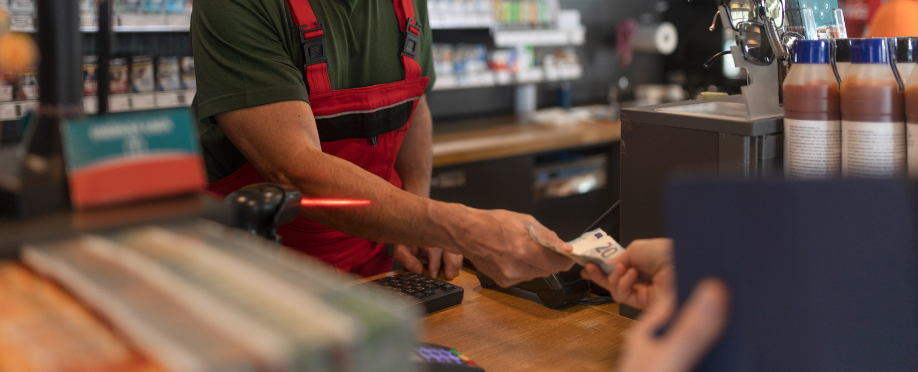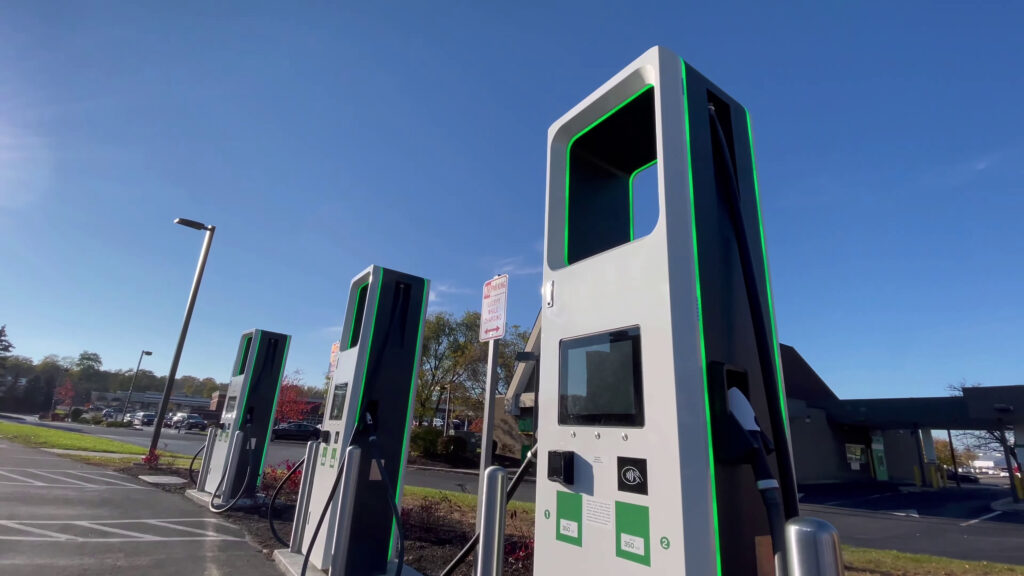
(Updated January 15, 2025)
Convenience store operators will have their work cut out for them in 2025. After a general industry plateau in 2024, stores will have to contend with evolving customer behaviors, the trend of EVs, and the rise of sustainability initiatives, among other challenges. Still, there is room for expansion in 2025 — the convenience store market is projected to grow annually by 5.6 percent until 2028.
The future is bright for convenience stores who are embracing the new landscape by adopting innovative strategies, incorporating sustainable practices, and harnessing cutting-edge technologies. Below, we outline a few of the must-watch convenience store trends for the year to come.
The Top C-Store Trends for 2025
In the coming year and beyond, the difference between meeting revenue benchmarks and truly thriving will depend on making decisions that serve the new ways that customers prefer to engage with their local c-stores, as well as implementing changes in compliance with new state and federal clean energy regulations.
Here are some ideas to consider adopting for your own convenience store business:
1. Elevate the Customer Experience
One of the greatest attractions convenience stores offer is, well, just how convenient they actually are. In order to capitalize on this advantage, c-store operators should continue to study and cater to consumers’ evolving shopping expectations.
This will be especially important moving forward, as many restaurants and retail stores during the pandemic shifted their own business models to serve customers’ demands for better speed, quality, variety, and more. As a result, c-stores are being forced to provide a whole new level of convenience.
This means making every visit as smooth, enjoyable, and easy as possible in every product and experience category. This includes increasing contactless purchase options (at the pump and through apps, for example), offering curbside pick-up, ensuring shelves are well-stocked with high-demand items, and ensuring cleanliness in the store.
2. Expand Healthy Food Offerings
During the pandemic, convenience stores were considered essential businesses. People came to rely on their local c-stores for basic household, fridge, and pantry staples. Locations that did best responded to this need by expanding their food offerings to include more groceries and ready-to-go meals. This ensured they could meet the needs of all local shoppers as an accessible one-stop shop for any snack or meal, or even the week’s groceries.
According to a recent survey from Intouch Insight, 56 percent of respondents also view convenience stores as a viable alternative to fast food chains. Food service has become such a central aspect of convenience store offerings, in fact, that it’s overtaken cigarettes as the largest category sold in c-stores. As a result, convenience stores are stepping up their game by offering more premium and fresh on-the-go meals. As Gen Z is demanding healthier options more than previous generations, this is a huge opportunity for c-stores to expand the range of healthy and fresh foods available to customers.
3. Support Electric Vehicle Growth
Gasoline still accounts for 62% of convenience store sales. But thanks in part to the 2022 Inflation Reduction Act (IRA), which among other provisions, incentivizes the adoption of electric vehicles (EVs) through uncapped tax credits, the global EV market has seen unprecedented growth, with over 40 million EVs registered worldwide.
Anticipating a continued surge in EVs on the road, convenience stores should look to add chargers to power these vehicles if they haven’t already. The good news is the Alternative Fuel Infrastructure Tax Credit is available to businesses for EV charger hardware and EV charger installation costs.
4. Practice Smart Energy Management
As essential as installing EV charging infrastructure may be, most convenience store operators already struggle with managing energy consumption — with the average c-store using around 15–20 kWh of electricity per square foot per year — and EV chargers will only place higher demand on the energy grid. Add to that the rising costs of energy, and demand side management is quickly becoming one of the most important trends among convenience store retailers.
Thankfully, while energy costs are going up, the cost of “smart” technologies for energy management is going down as they become more widely available. Energy management systems (EMS) are increasingly used for monitoring and controlling energy consumption in units such as refrigeration, hot bars, and other food and beverage equipment. For example, City’s Spark+ tool, which senses anomalies in temperature, can alert facilities managers to leakage and other malfunctions, allowing for immediate action, ensuring that energy consumption is tightly managed.
IoT frameworks, through the use of a network of sensors placed on equipment that collect data and feed it back to a central cloud, can give c-store facilities managers central control over assets and leverage the power of data to increase energy efficiency.
Facilities management companies who specialize in tech-supported energy management solutions can be a valuable resource when it comes to choosing the best systems for cost efficiency and ease of adoption – not just in support of your current infrastructure, but to support plans and goals for the future. As an example, City FM’s holistic energy management solutions typically reduce energy consumption by 50 percent or more.
Big-picture outlook: Is the convenience store industry growing?
Before you make sweeping changes to your business model and invest in some of these opportunities, it’s good to know that the outlook for the convenience store industry is promising for the years ahead. Due to factors like population growth, urban expansion, and continued consumer demand for convenience signaling steady demand, the industry is expected to grow by $930 billion between now and 2028.
While there is potential growth, there is also increasing competition among different chains. . That’s why it’s essential to stay on top of convenience store trends to thrive — by committing to customer-centricity and showcasing sustainability leadership, while also ensuring growth and profitability.
The Future of Convenience Store Growth
At City, we provide a holistic approach to facilities management that not only helps reduce energy consumption but also supports the seamless integration of new technologies like EV chargers. Our solutions have been proven to reduce energy usage by at least 15%, while improving operational efficiency and lowering costs. As the convenience store industry continues to evolve, having a strategic partner in facilities management will ensure you’re prepared to meet both customer expectations and sustainability goals. Learn more about our facilities management services.


 2016: City US is established in North America, in partnership with Southeastern Grocers (SEG), servicing over 750 supermarkets across 7 southern states.
2016: City US is established in North America, in partnership with Southeastern Grocers (SEG), servicing over 750 supermarkets across 7 southern states. 1985: Willie and Susan Haughey establish City Refrigeration Holdings (UK) Ltd in Glasgow, UK.
1985: Willie and Susan Haughey establish City Refrigeration Holdings (UK) Ltd in Glasgow, UK. 2009: City Australia launches in Melbourne, in partnership with Coles, servicing over 700 supermarkets across the country.
2009: City Australia launches in Melbourne, in partnership with Coles, servicing over 700 supermarkets across the country. 2015: City Asia launches in Kuala Lumpur, Malaysia, in partnership with Dairy Farm, servicing over 205 supermarkets across the region.
2015: City Asia launches in Kuala Lumpur, Malaysia, in partnership with Dairy Farm, servicing over 205 supermarkets across the region.